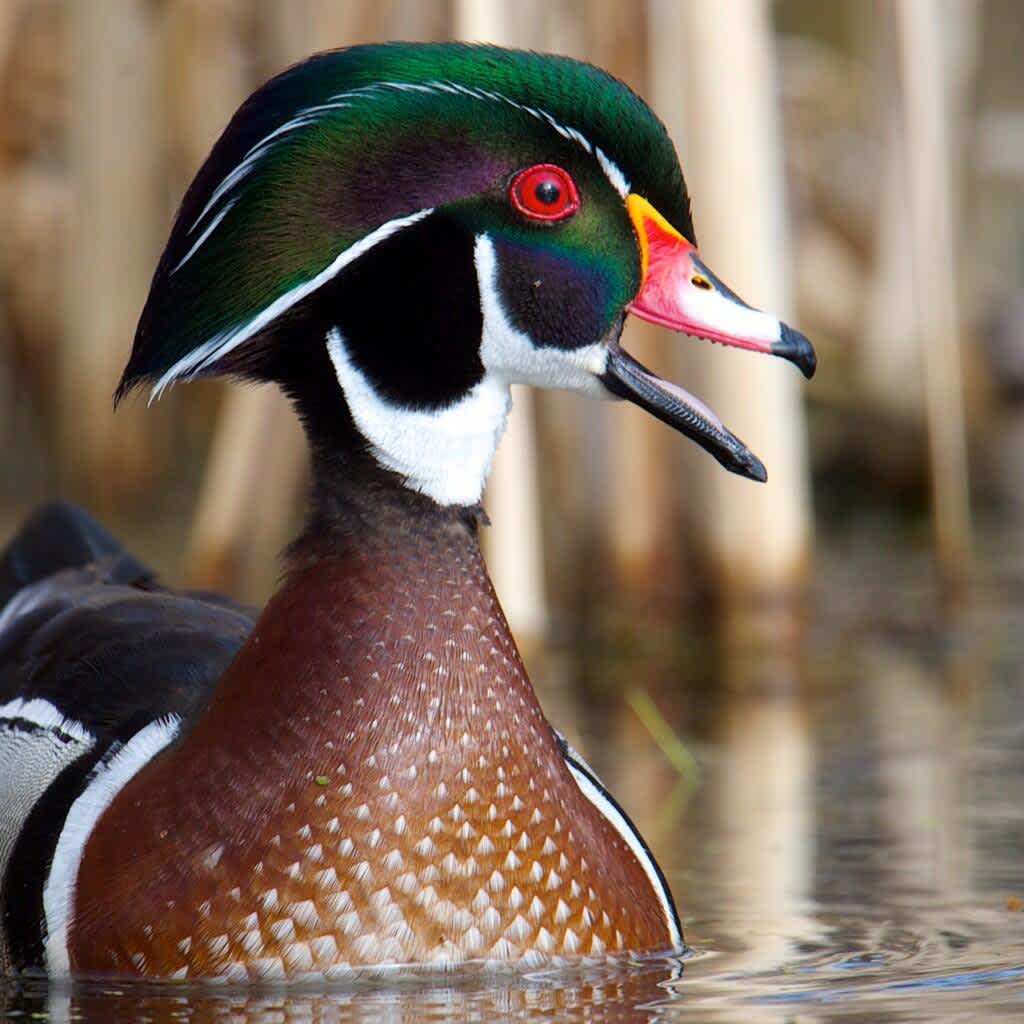Kentucky Early Waterfowl Seasons Offers Hunters Many Opportunities

Hunters across Kentucky will soon be celebrating the beginning of another waterfowl season and all the traditions that make this shotgunning sport so appealing.
Hunters rise well before dawn and experience beautiful sunrises on the water, the whisper of wings through the fog, and share a special bond with hunting buddies and hard-working retrievers. There’s the thrill of calling wary birds into gun range, the challenge of placing decoys to play shifting winds and building natural, camouflaged blinds in just the right location.
“Through the years there’s been a strong interest in our early seasons,” said Rocky Pritchert, migratory bird program coordinator for the Kentucky Department of Fish and Wildlife Resources.
Kentucky has about 20,000 avid waterfowl hunters, Pritchert said. “More people are hunting wood ducks and teal than geese, about 40 percent, as opposed to the 30 percent that hunt geese in September,” he explained.
To participate in Kentucky’s early waterfowl seasons, hunters must have a valid hunting license and a Kentucky waterfowl hunter permit and federal duck stamp for those over 15 years of age. Only non-toxic shot may be used to hunt waterfowl.
Hunting gets underway Sept. 1, with the opening of goose season, which continues through Sept. 15. The bag limit is three birds per day, an increase of one over last season.
Temperate nesting Canada geese raise their young and spend most of their lives here in Kentucky. “We’re hunting geese raised mostly in rural areas that generally fly short distances in search of food,” said Pritchert. “During the September season there’s no severe weather such as ice and snow to push our local birds southward or bring geese to Kentucky from states to the north.”
The statewide spring population of Canada geese has doubled from about 15,000 in the mid-1990s, when surveys first began, to about 31,000 today. The count is conducted before nesting so it does not include that year’s reproduction. A majority of the birds live in central Kentucky in the area roughly from Winchester westward to Leitchfield.
Since the late 1960s, the number of temperate nesting geese in the Mississippi Flyway increased exponentially to more than 1.5 million birds.
“In the years that we had a two-bird bag limit, hunters in Kentucky took between 4,000 and 6,000 Canada geese during the early season,” said Pritchert. “I’m anticipating the number of birds taken this year will be higher because of the increased bag limit.”
This summer, biologists and volunteers banded 1,503 Canada geese, a record number, on waterways from Cave Run Lake to Paducah. Adults made up about 87 percent of the banded geese.
Banding geese involves placing a light metal band around the leg of waterfowl so biologists can garner information important for waterfowl management. Hunters who take banded waterfowl should report their bands by calling 1-800-327-BAND.
Pritchert said nearly all of the September season’s band recoveries and about 70 percent of the band recoveries during the traditional November through January regular season harvest are comprised of locally-banded geese.
Kentucky’s five day early wood duck and teal season opens Sept. 18 and closes Sept. 22. The daily bag limit is four ducks, but no more than two may be wood ducks.
“Participation in the season varies from year to year, based on wood duck population levels and water conditions,” said Pritchert. “There’s lot of wood ducks this year and wetlands have recovered from last year’s drought.”
Wood ducks nest statewide, on streams, rivers and the shallow embayments of large reservoirs where there’s flooded timber. The best teal hunting is found on the big rivers, wetlands and lakes in the western third of the state.
Kentucky and Tennessee are the only states in the Mississippi Flyway to have an early wood duck season for locally-raised birds. Wood ducks born on Kentucky waterways typically leave the nest and learn to fly by late August.
“The justification for the season has always been that only locally-reared birds are harvested without impacting overall annual survival and reproduction,” said Pritchert.

